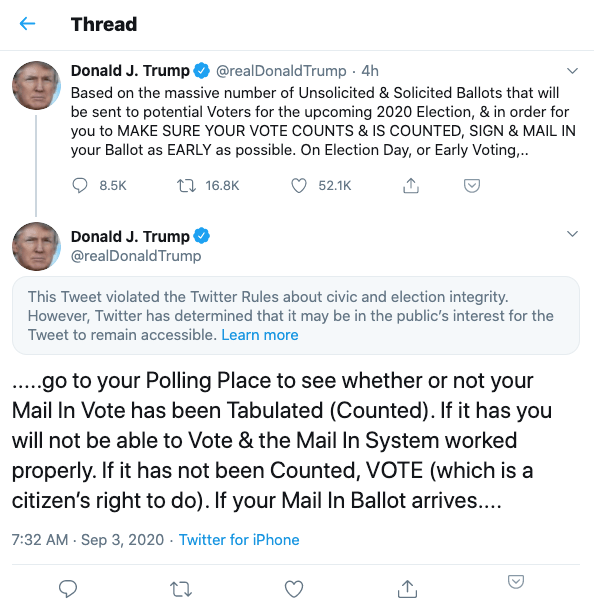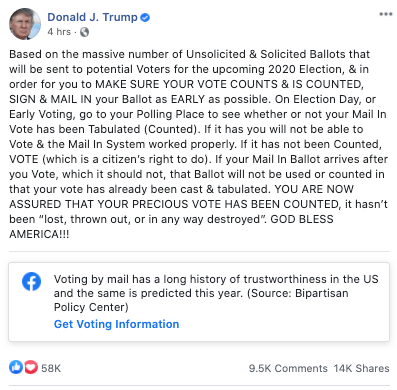It has been a hard year. We wake up every morning to new developments in the tragedies of the moment spanning a pandemic, the greatest unexpected loss of life since 9/11, national civil unrest, natural disasters and a looming economic collapse.
In the face of these developments, a completely understandable message from government agencies to the public might be: We can’t serve you right now. Please take a number and we’ll get back to you as soon as possible.
But as we know now, this is an unacceptable path to successfully, and proactively, addressing the increasing needs of citizens facing public health risk and economic uncertainty. In fact, in the past few months, Americans have exhibited an unquenchable thirst for fast, effective government services and information. Resident demands of local government and community organizations are rising. Their voices are louder than ever before. People are bringing a new civic experience to the forefront of local governments that’s delivered on their terms — and aligned with growing demand for always-on, 24/7 information and services.
A hallmark of 2020 (so far) has been global developments impacting people at a very local level. For instance, a pandemic sparked a massive shift in American civic engagement around issues like public health and racial equality. The past few months have reinforced what the real power of local government is: To efficiently offer services and information that directly impact people’s lives. For cities and municipalities, the question now becomes: How can local leaders embrace this new era of civic engagement in the world of COVID-19 to deliver digital solutions that help everyone meet the moment?
Build a digital public square for the people
In the United States, the COVID-19 pandemic has literally closed city halls and forced government agencies at all levels to rethink modernizing public sector work to digitally and equitably deliver citizen services. Mayors, city council members and local agency officials, in particular, need to embrace this complex moment in time as an opportunity to cultivate a more vibrant, straightforward, inclusive and participatory municipal experience. One way to do that is to invest in digital tools, technologies and talent that can help local governments develop online civic engagement and citizen service outlets. Platforms that not only offer needed government services, but also prioritize input from residents and encourage community dialogue guided by clarity, trust and accountability.
Service has always been at the core of local government. However, a main challenge facing public sector leaders today is how to transfer critical services online. More specifically, developing online services that allow people who no longer have the luxury of waiting in lines for in-person interactions to remotely register to vote, obtain or renew a permit, report downed power lines and more.
A recommended path toward solution(s): At the end of the day, citizens are consumers. They want around-the-clock access to government services and options for ways to interact with service providers that meet their needs while taking their personal comfort into account. For local government agencies in the midst of digital transformation, building convenience into in-house digital government offerings and solution procurements is crucial. Digital government service solutions must be designed — by agencies or contracted vendors — to be platform and device agnostic (or, at least, interchangeable) on the back end; taking an omnichannel approach that addresses the needs of citizens and agencies through web, mobile, social media and offline options on the front end.
Bring the value of local government home
An increased online presence of community members and remote workers during the pandemic offers municipalities a fresh and cost-effective opportunity to advance local government digital service. Until recently, seemingly table stakes actions like producing photos for identification cards, scanning important documents, digitizing forms and streamlining workflows and case management were only plausible if large government teams had the budget to purchase required technologies separately, then stitch them together. Budget and capacity-constrained communities were largely left in the dark.
The good news is that today’s cloud-based solutions are complete, affordable and scalable to communities of all sizes. The market features solutions that are purpose-built for local governments to integrate with legacy IT systems while transitioning traditionally in-person services to digital interactions. And it’s possible to tap these solutions to fuel America’s new, more active brand of civic engagement and service citizens rapidly.
Further, the advent of accessible and affordable (or free) digital engagement platforms now complements an expanding recognition among American society that truly impactful things can come from government sources. The shift in thinking has produced civic engagement defined not by a sprint to profits, as is the case in the private sector, but by the ability for a representative community to actually influence policy and shape citizen services delivery.
A recommended path toward solution(s): In addition to always-on capabilities, digital government platforms need to be able to deliver goods and services to citizens directly and without friction. Whether accessing a government assistance application or applying for a park permit, citizens want their requests fulfilled without complications or inefficiencies plaguing the process — and going all-virtual or mostly remote during COVID-19 has made this more important than ever. In response, agencies should invest in the creation of digital forums for two-way communication to capture feedback that accurately reflects the demands and needs of the local community at the individual household level.
Boost digital forum accountability and representation moving forward
Today’s elevated energy around civic engagement is a direct result of the pandemic, expanding consumer activism and recent protests against systemic injustice. This confluence of factors offers local governments a fleeting opportunity to move beyond simply observing vocal citizen activity across the country. There’s now an opening to build upon, and actively grow, levels of civic engagement and community trust over time.
It’s now possible for local governments to reach more citizens by expanding their networks of interested subscribers and combat misinformation while keeping every resident informed. Agencies can advance on both fronts by providing civic leaders a two-way forum that encourages them to share progress being made in policy and procedures. After all, interacting with governments should be as simple and transparent for everyone as checking a bank account balance or reordering coffee pods from Amazon.
A recommended path toward solution(s): Municipalities should jump at this chance to really listen to diverse community voices pushing for change — especially as some powerful people in government and society seek to quiet or ignore them. They should consider developing long overdue digital solutions that amplify diverse community voices, deliver critical services and help to inform people broadly. Citizens, for their part, should be able to easily provide feedback, share ideas and voice their pressing needs to public sector officials or representatives who can help residents feel secure, listened to and taken care of. Expanded civic engagement impact entails reaching more people through their preferred channels, whether that’s email, text or snail mail, and establishing a dialogue that converts to action.
I’m confident that local governments throughout the country can rise to today’s unprecedented challenges by providing digital civic engagement outlets built to elevate individual perspectives on policy issues and surface life experiences that, in turn, inform inclusive civic action and real change.

Source: Tech Crunch





